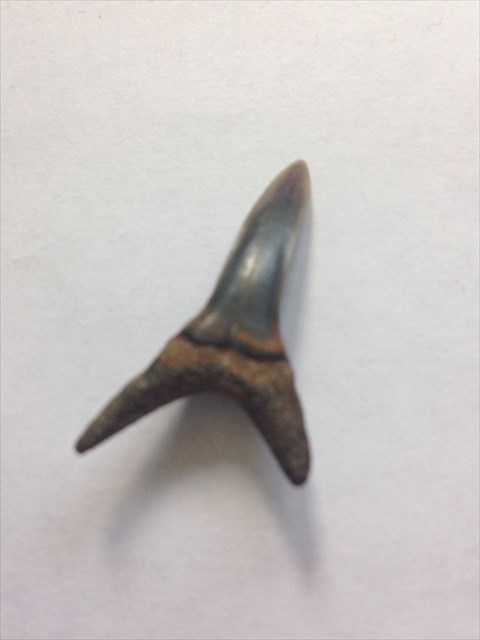Geology of Kent from the Palaeogene era
Herne Bay consists of an overlying succession of sands and clays from Palaeocene and Eocene age.
The Thanet Sand Formation is the oldest of these and occupies an area from the coast near Sandwich east through Canterbury to Sittingbourne, Rochester and, intermittently, to Dartford.
Above this, the Upnor Formation is a thinner band of pebbly, shelly sands and clays ascribed to the Lambeth Group.
Following the Thames Estuary coast is the Eocene age silty and sandy clay of the London Clay Formation. It underlies Herne Bay, Whitstable and the Isle of Sheppey. These two clay groups form the mud flats which reveal themselves at low tides.

Herne Bay Hunting
The prehistoric evidence reveals Kent lay beneath a warm, shallow sea. As a result conditions on the seafloor were relatively undisturbed, allowing fine particles of sediment suspended in the water column to gradually settle.
Life during the late Palaeocene and early Eocene was abundant, the nearby land was covered by lush tropical vegetation, providing habitat for mammals, birds and insects, whilst in the sea marine life flourished.
The diversity of life is represented in the fossils found at Herne Bay which includes both marine and terrestrial organisms.
At low tide the sea receeds enough to frequently allow for fossil hunting with finds from the Upnor Formation proving most frequent.
The fossils found within these clays and silts are numerous. Shark teeth are the most frequent and abundant.
Shark Teeth
Shark Teeth are numerous due to sharks losing many teeth, this could be up to as many as 35,000 teeth in a lifetime. And a shark can reproduce a lost tooth within a day!
Sharks have been living on Earth for about 400 million years.
When a shark tooth falls to the bottom of the ocean and get covered with sandy sediment. This sediment prevents oxygen and destructive bacteria from reaching the tooth, and it fossilizes over the course of about 10,000 years.
That's why most of the teeth that are found are not white, but gray, black or brown, the colour of the sediment. The tooth absorbs the minerals in the sediment and these minerals eventually replace the dentine and enamel that makes up the tooth.
The many teeth found around Herne Bay are from Sand Tiger Sharks. The Sand Tiger Shark still exists today and is related to the Great White Shark.
The teeth you might find here are likely to be 50+ millions of years old.

Earthcache
To log this Earthcache you will need to answer the following questions...
1. From information you observe on the page and at information boards and from your observations on the beach. Please describe the mud flats / sea floor. What is the texture of the sediment. Does it vary in different areas. And what formation group do you think it could be from?
2. From your discoveries as to which formation the sediment may be, how many millions of years ago was the sands and clays deposited?
3. From information you have found or from you actually discovering a shark tooth. Describe the colour of the tooth / teeth found.
4. Please explain why the teeth are not white and how long does this process of fossilisation take?
5. OPTIONAL Post a picture of you with your shark teeth finds at the location in your logs. You may keep your fossil.
Hunting for fossils
It is up to you if you wish to actually hunt for a fossil. It is not necesary to find a fossil to claim this Earthcache, but it is highly recommended. You do not need to enter the sea if you do not wish to. At low tide this can be completed without getting wet. If you do decide to hunt for fossils, please take note of the points below.
It is recommended for kids to find a fossil, but they must all be supervised at all times by a responsible adult
Fossil teeth can be found laying on the sands / clays or just beneath them. A keen geocachers eye should spot you a find. I searched on a day with a -0.36m low tide and searched close to the receeding sea and out onto the mud flats. I found a tooth tucked in amongst a cluster of other sea debris of rocks and shells and under about an inch of water. The further out you go the more chance you have. I found a tooth after about 20 minutes of searching so please allow a reasonable amount of effort in your search. Brushing the sands with your hands could reveal hidden fossils just under the surface.
Shark teeth are most numerous finds, although you may spot other fossils, and any info you wish to add to your answers about other fossil types found would be extremely interesting to hear.
Information and pictures of fossils found at Herne Bay can be found on the related webpage, above
There is a lot more information available online with a quick search for "Herne Bay Fossils"
Where to look
Fossil hunting is recommended in the area directly at the bottom of the beach access point, from the car park follow the concrete road down to the beach.
There are two concrete stairs onto the beach just to the West, this area is recommended all the way West until you reach a section of the beach that is covered in large rocks.
Or all the way to the East from the access point to the cliffs near Reculver. There is a good kilometre or more to search where fossils are regularly found.
You will not be alone in your fossil hunt, so don't be afraid to ask for a tip from regular fossil hunters.
When to go
Please visit this site with caution. The sea and tides can be dangerous. Please look at tide times before you visit this location, tide times for the area are available here...
Your best time to visit is TWO HOURS BEFORE a low tide. Aim to leave your hunt as the tide turns. So leave what you are doing at the low tide time. The mud flats are flat, and the tide returns very quickly!
A low tide below 1m is good, and any below ZERO are excellent. Any ZERO metre low tide will allow a reasonable time for looking for fossils.
Suitable shoes are recommended, bare feet are not recommended whatsoever as there are sharp shells and live sealife including crabs, snails and jellys.
Responsibility for your actions is entirely your own. Please be careful and read all you can for you to be comfortable to visit this Earthcache.
I do however strongly recommend a search for a fossil, it was a real thrill once I found one!
Information has been gleaned from Wikipedia and discoveringfossils.co.uk
